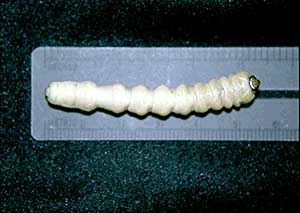Wednesday, January 3, 2018
Just back in with Karl the Wonder Dog. It's a quiet morning, +11° when I first went out but now down to +5.7°. Windless. The moon is bright although there are some minor clouds floating in front of it. There's a prominent, wide, white jet stream over the house but I don't remember hearing a plane go over. A friend in Sharon, Vermont reports he thinks he sees the same thing. It's big!
It's a new year and a time when I can squeeze in some writing to The Vermont Gardener which I have neglected for some time. A couple years ago I found that Facebook was doing a good job for us getting the word out about Vermont Flower Farm and Gardens but politics and inaccurate reporting have taken away visitors and detracted from a good source for me to tell about gardening in New England. I'm working on year two of a monthly piece I write for the
North Star Monthly, a terrific paper that originates in Danville, Vermont, about 12 miles from here. Between that and more writing to The Vermont Gardener I hope I can get some gardeners switched over to a more regular source of gardening information. Our website for
Vermont Flower Farm continues to be an excellent source of information and it too is undergoing some changes during what has become the coldest winter I can remember since being a kid. Back then it was not uncommon for us to see our breath inside our old farmhouse when we went to bed and it was really obvious when we woke up! -25° is a number I do not like to see and feel!
2017 was a great season for us at the flower farm on Route 2. It was a depressing start in April and May when it just rained and rained. We couldn't get into the fields to plant, seeds would wash away, and it was too cold to get small plants going. Alex couldn't mow the fields and as the grass grew taller and taller, so did the weeds between the rows of perennials. Then one day it stopped raining and really that was it. Within a week Alex could mow and I hired two helpers to weed whack between the rows of perennials to shape things up. Our planting crews appeared and the insulating blankets and plastic came off all the plants we carried over and life began again. From then on the majority of the rain came at night and 2017 turned into our most successful year ever!
For 2018, we will not deviate much from what we have offered for the past 30 years. Daylilies and hostas will continue as our main crops with over 500 varieties of each to choose from. We have display gardens to walk through and thousands of pots of each of these ready to go. Vermont Flower Farm is one of the best places in Vermont to walk around and pick up large plants in garden-ready pots offered as gallons, 6 quarts, 2 gallons and some specimen sized plants for instant gratification planting. We open on Mother's Day every year--rain or snow does not deter us--and we continue into mid October, sometimes a bit longer if the weather holds as it did this past fall. It's a long season for us but it provides gardeners and landscapers a great source for excellent, Vermont-hardy plant material.
Besides the daylilies and hostas we have one of the best selections of peonies and also astilbes in Vermont. Our current selection of astilbes numbers about 50 varieties and our experience with this plant is some of the most extensive in Vermont over the past 25 years. We were co-featured in last year's spring issue of Fine Gardening Magazine and we know that if you're looking for astilbes, you probably already found us. As with all our perennials, these can be purchased from our site via mail order. We ship Monday, Tuesday and Wednesday each week.
We have always grown peonies and always had a small number for sale but two years ago we started to build our inventory and in 2018 we will offer 50 varieties. These are all potted and tagged and ready to go right into your garden. I will not have complete pictures on our website until next year but most of what we sell will bloom this year.
5 years ago we started growing lilacs again as the garden industry began to promote them again and garden restorations always seemed to mention them. We have mature lilacs planted around the flower farm property and sell them in one gallon and two gallon pots. There are over 25 varieties available now and there's little doubt that number will grow as they become popular again.
For ten years now we have sold hydrangeas and 2018 will be no different. The exception are the blues and pinks commonly known as Endless Summer because they are not dependable in Vermont. They bloom on the previous year's stem and often succumb to repeated spring frosts which kill the flower buds. We offer twenty varieties in sizes of 2 feet tall at maturity, 3-5 feet and 4-8 feet.
Gardeners can never say "no" to new plants and besides our major offerings we have dozens of other plants to offer you. Actaea, pulmonaria, sedums, rodgersia, astilboides tabularis, Siberian iris...a long, long list of Vermont hardy perennials. Give us a thought, view our website
http://vermontflowerfarm.com, read about us here on The Vermont Gardener, or check us out on Facebook at Vermont Flower Farm and Gardens or my personal page, George Africa. Although some of the world does not like Twitter, we are linked to Twitter too for all our posts, and you'll see our name on various social media formats too!
Best gardening wishes, smiles and good health for 2018!!
George Africa
The Vermont Gardener
,






























